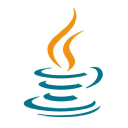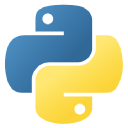I Earn $3M/Year Developing Clone Apps For Startups
Hello! Who are you and what business did you start?
We are Rahul Sharma (CEO) and Shivangi Sharma, the co-founders of the globally acclaimed, service-based app and web development company, Appscrip.
Appscrip is the lovechild of our passion for technology, the constant urge to create mobility solutions, and being a tech solution provider for leading startups. The lack of a specialized provider who could act as a technology partner for startups working on on-demand services, social eCommerce, Fintech, and messaging platforms allowed me to start Appscrip. We identified the common denominator to help the end platform owners save time and money. That way, they could focus on their core product.
Up until today, Appscrip has delivered over 350+ apps/year globally with an in-house team of 150+ developers, at an average of 45 days/app that otherwise would take almost 6-9 months to develop. My company has encouraged women, entrepreneurs, by helping them launch successful businesses across the globe.
We have received several awards and recognitions from Deloitte, Clutch, Good firms and...

Download the report and join our email newsletter packed with business ideas and money-making opportunities, backed by real-life case studies.

Download the report and join our email newsletter packed with business ideas and money-making opportunities, backed by real-life case studies.

Download the report and join our email newsletter packed with business ideas and money-making opportunities, backed by real-life case studies.

Download the report and join our email newsletter packed with business ideas and money-making opportunities, backed by real-life case studies.

Download the report and join our email newsletter packed with business ideas and money-making opportunities, backed by real-life case studies.

Download the report and join our email newsletter packed with business ideas and money-making opportunities, backed by real-life case studies.

Download the report and join our email newsletter packed with business ideas and money-making opportunities, backed by real-life case studies.

Download the report and join our email newsletter packed with business ideas and money-making opportunities, backed by real-life case studies.























